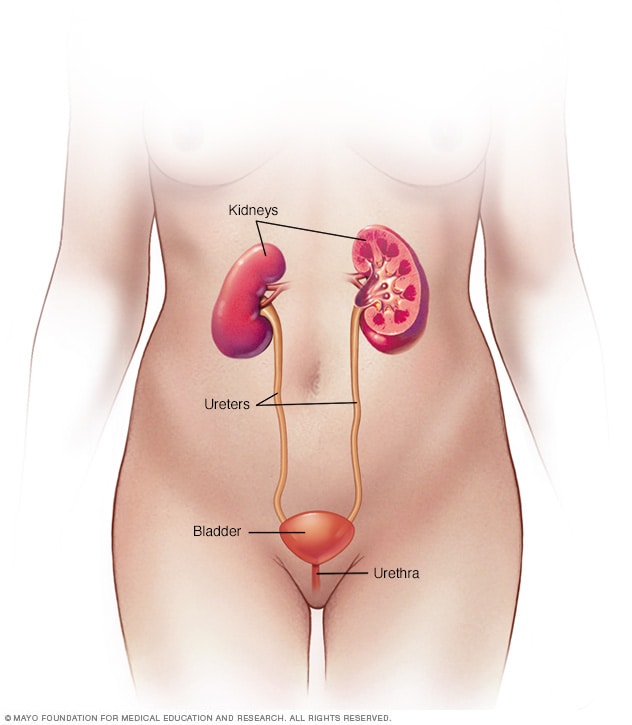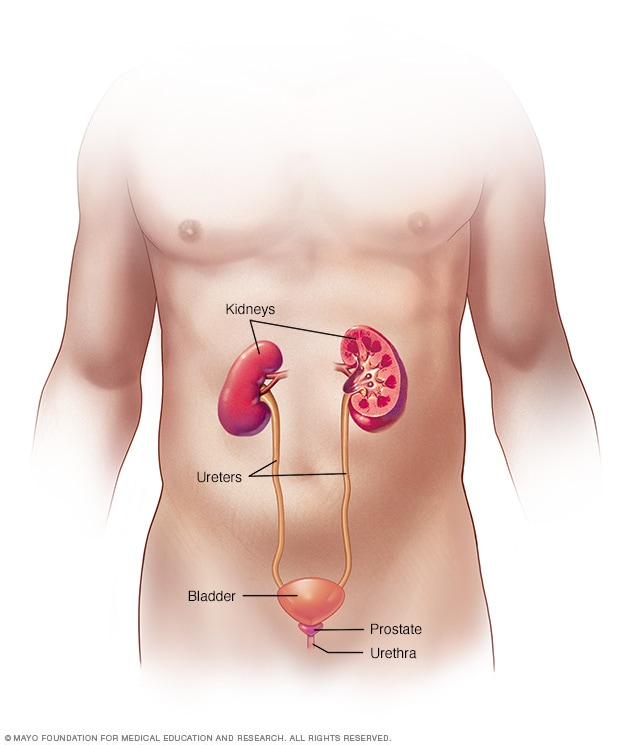Τι δείχνει το χρώμα των ούρων για την υγεία σας (εικόνες)

Οι ουσίες που απορρίπτει το σώμα μας, όπως τα ούρα, συχνά
δίνουν σημαντικές πληροφορίες για την κατάσταση της υγείας μας και για
τυχόν προβλήματα και δυσλειτουργίες που δεν έχουμε αντιληφθεί.
Όταν τα ούρα έχουν πολύ ελαφρύ κίτρινο χρώμα ή είναι σχεδόν διάφανα, αυτό σημαίνει ότι το σώμα είναι επαρκώς ενυδατωμένο.Τι σημαίνει όμως εάν τα ούρα έχουν κόκκινο, πράσινο ή ακόμη και μπλε χρώμα;
- Κόκκινα ούρα

Τροφές όπως το παντζάρι και τα βατόμουρα μπορεί να δώσουν στα ούρα μια κοκκινωπή ή ροζ απόχρωση. Ορισμένες από τις χρωστικές ουσίες που δίνουν σε αυτές τις τροφές το χαρακτηριστικό χρώμα τους αποβάλλονται μέσω των ούρων αφού τις επεξεργαστούν τα νεφρά. Στην περίπτωση αυτή, το χρώμα των ούρων επανέρχεται μετά από μία ημέρα. Εάν το κόκκινο χρώμα στα ούρα παραμένει, μπορεί να αποτελεί ένδειξη για πρόβλημα στην ουροδόχο κύστη ή στα νεφρά.
- Πορτοκαλί ούρα

Η αυξημένη πρόσληψη βήτα καροτενίου, μιας χρωστικής που βρίσκεται σε μεγάλες συγκεντρώσεις στο καρότο, στη γλυκοπατάτα, στις κόκκινες πιπεριές και στο πεπόνι κανταλούπε, μπορεί να προσδώσει στα ούρα πορτοκαλί απόχρωση. Το ίδιο συμβαίνει και με ορισμένα φάρμακα, όπως η αντιπηκτική βαρφαρίνη. Εάν το πορτοκαλί χρώμα των ούρων είναι πολύ έντονο, μπορεί να υποδεικνύει πρόβλημα στο συκώτι, ειδικά εάν το σύμπτωμα συνδυάζεται με κιτρίνισμα των ματιών (ίκτερος).
- Έντονα κίτρινα ούρα

Η συγκεκριμένη απόχρωση στα ούρα απαντάται συχνά σε άτομα που λαμβάνουν συμπληρώματα βιταμινών, κυρίως βιταμίνες του συμπλέγματος Β και ιδιαίτερα βιταμίνη Β12. Η ένδειξη στην περίπτωση αυτή δεν θεωρείται ανησυχητική.
- Πράσινα ούρα

Τροφές όπως τα σπαράγγια μπορεί να δώσουν στα ούρα πρασινωπή απόχρωση και να επηρεάσουν επίσης τη μυρωδιά τους. Το πρασινωπό χρώμα των ούρων μπορεί επίσης να υποδεικνύει μια μορφή ουρολοίμωξης που προκαλείται από το μικρόβιο Πρωτέας. Το μικρόβιο συνδέεται με τον σχηματισμό πέτρας στα νεφρά, οπότε επιβάλλεται η επίσκεψη στον γιατρό εάν το πράσινο χρώμα των ούρων δεν μπορεί να εξηγηθεί από τις διατροφικές συνήθειες.
- Μπλε ούρα

Μια σπάνια γενετική ασθένεια που ονομάζεται υπερασβεστιαιμία και η οποία αφορά στην περίσσεια ασβεστίου στα οστά μπορεί να οδηγήσει στην παραγωγή ούρων με μπλε απόχρωση.
- Καφέ ούρα

Μια κατηγορία διαταραχών που ονομάζονται πορφυρίες συχνά προκαλούν παραγωγή ούρων με καφετί απόχρωση. Το σύμπτωμα είναι αποτέλεσμα του τρόπου με τον οποίο διασπώνται τα ερυθρά αιμοσφαίρια. Οι πορφυρίες είναι αρκετά σπάνιες, εάν όμως το συγκεκριμένο χρώμα στα ούρα συνοδεύεται από πόνο στην κοιλιά, δερματικά εξανθήματα ή επιληπτικές κρίσεις αξίζει μια πιο αναλυτική εξέταση από ειδικό. Τροφές που μπορεί να προσδώσουν καφετί χρώμα στα ούρα είναι το λαχανικό ραβέντι και τα κουκιά.
- Λευκά ούρα

Εάν τα ούρα είναι «θολά» ενδέχεται να έχουν σχηματιστεί πέτρες στα νεφρά ή να βρίσκεται σε εξέλιξη κάποια σοβαρή λοίμωξη.
URINE COLOUR
Normal urine color ranges from pale yellow to deep amber — the result of a pigment called urochrome and how diluted or concentrated the urine is.
Pigments and other compounds in certain foods and medications can change your urine color. Beets, berries and fava beans are among the foods most likely to affect the color. Many over-the-counter and prescription medications give urine vivid tones, such as red, yellow or greenish blue.
An unusual urine color can be a sign of disease. For instance, deep red to brown urine is an identifying characteristic of porphyria, a rare, inherited disorder of red blood cells.
Symptoms
Normal urine color varies, depending on how much water you drink. Fluids dilute the yellow pigments in urine, so the more you drink, the clearer your urine looks. When you drink less, the color becomes more concentrated. Severe dehydration can produce urine the color of amber.But urine can turn colors far beyond what's normal, including red, blue, green, dark brown and cloudy white.
When to see a doctor
Seek medical attention if you have:- Visible blood in your urine. Bloody urine is common in urinary tract infections and kidney stones. These problems usually cause pain. Painless bleeding might signal a more-serious problem, such as cancer.
- Dark or orange urine. If your urine is dark or orange — particularly if you also have pale stools and yellow skin and eyes — your liver might be malfunctioning.
Request an Appointment at Mayo Clinic
Causes
Discolored urine is often caused by medications, certain foods or food dyes. In some cases, though, changes in urine color can be caused by specific health problems.The color categories here are approximate, because what looks like red to you might look like orange to someone else.
Red or pink urine
Despite its alarming appearance, red urine isn't necessarily serious. Red or pink urine can be caused by:- Blood. Factors that can cause urinary blood (hematuria) include urinary tract infections, an enlarged prostate, cancerous and noncancerous tumors, kidney cysts, long-distance running, and kidney or bladder stones.
- Foods. Beets, blackberries and rhubarb can turn urine red or pink.
- Medications. Rifampin (Rifadin, Rimactane), an antibiotic often used to treat tuberculosis, can turn urine reddish orange — as can phenazopyridine (Pyridium), a drug that numbs urinary tract discomfort, and laxatives containing senna.
Orange urine
Orange urine can result from:- Medications. Medications that can turn urine orange include the anti-inflammatory drug sulfasalazine (Azulfidine); phenazopyridine (Pyridium); some laxatives; and certain chemotherapy drugs.
- Medical conditions. In some cases, orange urine can indicate a problem with your liver or bile duct, especially if you also have light-colored stools. Dehydration, which can concentrate your urine and make it much deeper in color, can also make your urine appear orange.
Blue or green urine
Blue or green urine can be caused by:- Dyes. Some brightly colored food dyes can cause green urine. Dyes used for some tests of kidney and bladder function can turn urine blue.
- Medications. A number of medications produce blue or green urine, including amitriptyline, indomethacin (Indocin, Tivorbex) and propofol (Diprivan).
- Medical conditions. Familial benign hypercalcemia, a rare inherited disorder, is sometimes called blue diaper syndrome because children with the disorder have blue urine. Green urine sometimes occurs during urinary tract infections caused by pseudomonas bacteria.
Dark brown or cola-colored urine
Brown urine can result from:- Food. Eating large amounts of fava beans, rhubarb or aloe can cause dark brown urine.
- Medications. A number of drugs can darken urine, including the antimalarial drugs chloroquine and primaquine, the antibiotics metronidazole (Flagyl) and nitrofurantoin (Furadantin), laxatives containing cascara or senna, and methocarbamol — a muscle relaxant.
- Medical conditions. Some liver and kidney disorders and some urinary tract infections can turn urine dark brown.
- Extreme exercise. Muscle injury from extreme exercise can result in pink or cola-colored urine and kidney damage.
Cloudy or murky urine
Urinary tract infections and kidney stones can cause urine to appear cloudy or murky.Risk factors
Discolored urine that isn't the result of foods or medications could be caused by a medical condition that affects urine color. Factors that put you at risk of medical conditions that can affect urine color include:- Age. Tumors of the bladder and kidney, which can cause blood in the urine, are more common in older people. Men older than 50 occasionally have urinary blood due to an enlarged prostate gland.
- Family history. A family history of kidney disease or kidney stones makes it more likely that you'll develop these problems. Both can cause blood in the urine.
- Strenuous exercise. Distance runners are most at risk, but anyone who exercises vigorously can have urinary bleeding.
By Mayo Clinic Staff
Πηγή: prevention.com,onmed.gr, Mayo Clinic


Δεν υπάρχουν σχόλια:
Δημοσίευση σχολίου